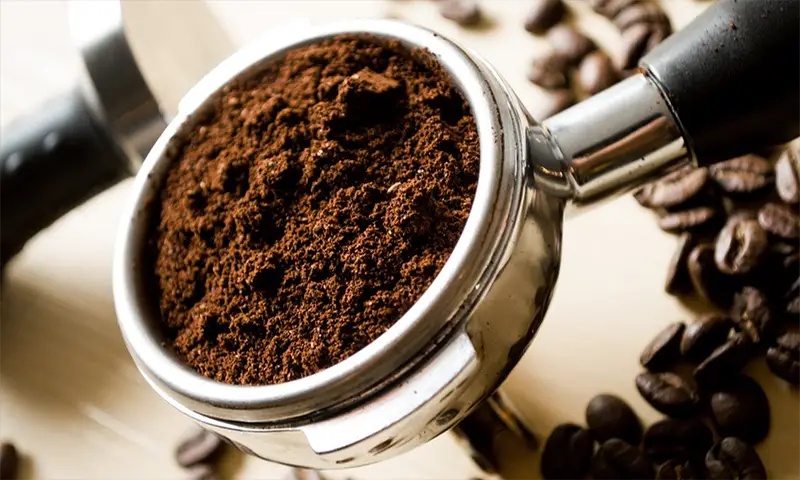Grinding coffee correctly is the first step to making perfect early mornings; here’s everything you need to know before you even touch your coffee maker or espresso machines.
According to experts, the first and the only rule for brewing delicious coffee is to grind your own, so we’ve put together a comprehensive guide on how to grind coffee beans, by using a coffee grinder or by grinding coffee beans without a grinder.
It’s important to always grind your beans just before use, as the pre-ground form tends to lose its aroma and flavor. No one wants coffee that’s lost it’s intended flavor and aroma, right?
So now we know why coffee enthusiasts prefer to grind their own cup of joe at home, but having to do that each day can often seem like an additional chore and after all, it’s just coffee, isn’t it?
No, fresh coffee brewed with at home is undoubtedly worth the effort. Don’t worry, it’s not actually a complicated process. To make it easier for you, we’ve put together a step-by-step guide to help you grinding coffee like a pro!
How to Grind Coffee Beans at Home
Here are a few tips to keep in mind if you’re not sure how to grind coffee beans:
Step 1: Never Pre Grind your Coffee Beans
As we mentioned before, the first and most important rule here is to not pre grind your coffee for brewing a cup of coffee until the last minute. In order to have a fresh, delicious, perfect cup of coffee, you need to purchase whole beans and keep them stored in an airtight container. Keep them whole! Grinding ahead of time will make them become stale much more quickly.
By doing this, you will protect your beans and help them keep their aroma and flavor intact so that each time to brew, you get an amazingly delicious coffee and a smell that is out of this world too. So, make sure you grind only enough coffee for each day and keep the rest in an air-free container.
Step 2: Understand the Grind Size You Want to Achieve
A lot of people don’t pay attention to this part, but the actual size of the coffee grind is important too. We’ll get to the ‘how’ of grinding in a moment. For now, just know that there are lots of different methods and styles of brewing coffee. Each of these styles requires a particular grind size to work best. Here are a few popular coffee grind sizes to keep in mind:
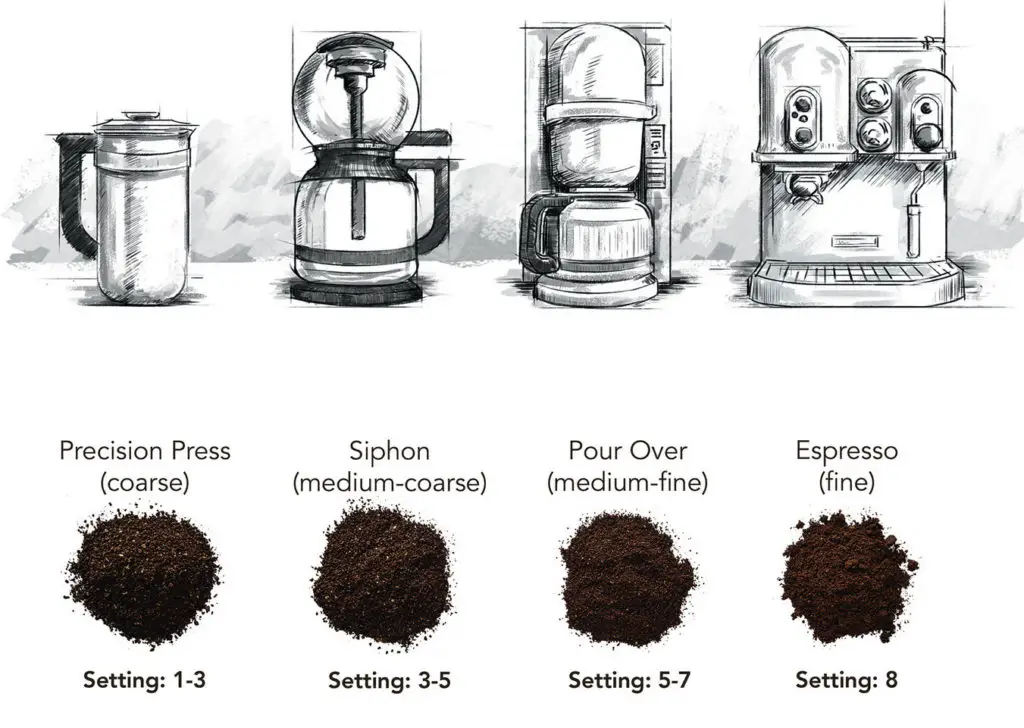
Coarse Grind
As we said before, each brewing method requires different grinding consistencies in order to produce a good cup of coffee. Generally, a coarse grind is the size of breadcrumbs and is usually ground by a blender. If you grind beans like this, it’s perfect for french press, Vacuum coffee makers, and Cold brew blends.
Medium Grind
Medium grind coffee is about the size of granular sugar and works well for a variety of blending methods, but should not be used for Turkish espresso or Turkish coffee. It is generally excellent grind size for trickle coffee, pour-over technique, and Chemex brewers.
To get achieve medium grind, you can start by splitting the coffee beans with the help of a knife or mallet, don’t worry if you don’t have a proper grinder at home. A mid-grind is the best choice for drip coffee too.
Fine Grind
If you’re after a delicious cup of espresso, then fine grinds are what you’re after. Apart from espresso, finely ground coffee is also excellent for a home coffee maker. Also, stove-top prepared coffee and professional systems alike. When done correctly, it will resemble the structure of table salt. accomplish this with the help of a blender, rolling pin, french press or by using a mortar and pestle.
Super Fine Grind
Finally, you have the super-fine coffee grinds which resemble powdered sugar. This type is the best option for preparing Turkish coffee and/or Greek espresso. For this, you’ll need the help of a mortar and pestle.
Hooked on Coffee? Read More:
- How to Brew Your Coffee Using a French Press
- The Ultimate Guide to the Best Coffee from Around the World
- How to Cold Brew Using a French Press
- 14 coffee filter substitutes
Step 3: Measure and Weigh Your Coffee
Another very important thing to keep in mind is measuring and weighing your coffee accurately. This ensures a consistent taste every time you brew. For best results, we recommend the ratio of 1 tablespoon of ground coffee to 1 cup of water. Or, to be even more accurate, 15 grams to every 250 grams of water.
Make sure that you have proper kitchen measuring tools to get the right ingredients measurement and remember, try to grind only the amount that you will be using to brew coffee that day. If you plan to drink 4 cups of coffee, then grind the exact amount for 4 cups of coffee only.
Step 4: Find the Perfect Grinder to Suit Your Needs
The next important thing to keep in mind is that if you are going to brew truly fresh coffee daily, you’ll want to invest in a good coffee grinder. There are essentially two types of grinders that you will want to check out: Burr Grinders and the Blade Grinders.
A Blade Grinder is similar to a standard blender; it has its whirring blades located at the bottom of the container. This type of coffee grinder has a couple of downsides. Firstly, it usually produces an inconsistent grind size. Also, there’s a chance that a blade grinder might actually heat up and slightly cook your coffee beans. This would alter the taste of your end product.
A special kind of coffee grinder called Burr Grinders comes with two butting discs–known as burrs–which are kept at a fixed distance from each other. This development helps the burr grinder to keep a consistent grind. You can adjust the intended grind size by altering the distance between the two burrs. If you reduce the distance between the two burrs you’ll get a finer grind. An increased distance will result in a coarser grind.
Getting a consistent grind is especially important when the coffee grounds are exposed to water during the extraction process. This extraction is what pulls the coffee flavor out of the coffee grind. By having consistently sized coffee particles, you’ll be rewarded with a tastier brew.
Step 5: Decide Between an Automatic and Manual Grinder
If you have decided to purchase a burr coffee grinder then you need to choose between an automatic burr grinder and a manual burr grinder.
A manual burr grinder will be cheaper and more compact, which is a great choice for travel. However, you should consider the cost and efficiency of the coffee grinder before making a choice. There are pros and cons to both the types of grinders.
Here’s why Burr Coffee Grinders Matter
Alternatively, if you decide not to purchase a grinder or don’t have the budget for one at the moment, all is not lost! There are plenty of kitchen tools that work as a substitute to grind your beans at home.
How to Grind Coffee Without a Grinder
If you want that fresh coffee grinder result with minimal manual effort, these are the best options for how to grind coffee beans without a grinder. Follow the steps below to complete this task without any extra kitchen equipment. You’ll enjoy a freshly brewed cup of coffee just the same.
Blend the Coffee Beans
Here is the first way you can grind beans without the use of a grinder. Measure the coffee beans you’ll need and then place them in a mixer jug. Set your blender to the lowest blending setting and cover tightly. Blend your coffee beans just like you would with a coffee grinder. Use 2-second short bursts or pulses for a total of about 10 seconds. Now, add more beans and repeat the process. Continue this until you have the desired amount and the correct grind density. A blender is a perfect way to grind your coffee beans into coarser grinds. By processing in small batches, you can prevent the blades from getting too heated and cooking the beans.
Once you are done, we recommend that you thoroughly wash the blender to get rid of the residual coffee and smell.
Use a Food Processor
You can also use a food processor to grind coffee beans without the use of a grinder.
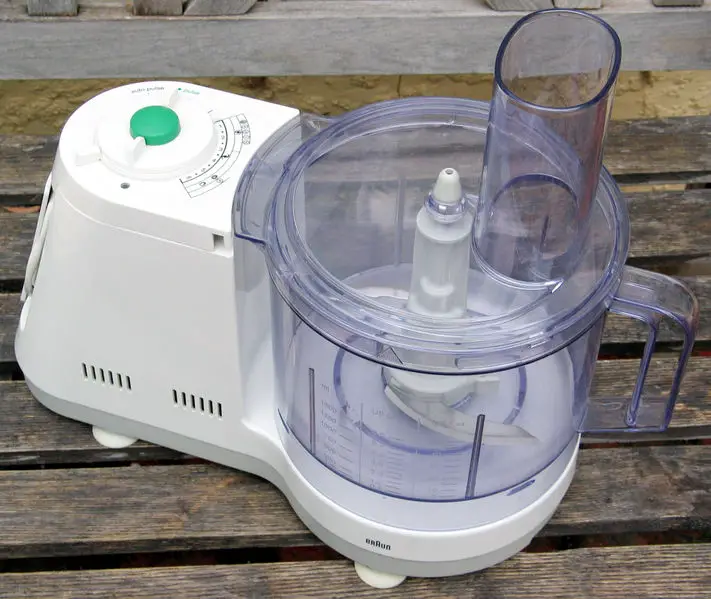
Similar to the blender style above, we want to grind coffee in small batches here too. Just take a few coffee beans and grind them at 5-second pulses for about 15-20 seconds. Make sure that you add only a few coffee beans each time until you reach the desired amount.
Although a food processor won’t offer a perfectly consistent grind, it will allow you to get it pretty fine which can be used in a variety of different coffee styles and will still give you that perfect cup.
Use an Immersion Blender
For this method, you need to grind coffee beans at the bottom of a tall container and place your immersion blender (also known as a hand blender) inside, standing it up vertically. Cover the container as best you can with a kitchen towel or paper towel. This will reduce the chances of pieces flying out as you blend. Now, pulse your immerse blender 20-30 times and check your grind regularly to monitor the fineness. If done correctly and with a little practice, this method can be just as effective as a coffee grinder.
Once you get the desired grind, we’d again recommend you clean the container and blender immediately after you are finished to get rid of the coffee odor and oils.
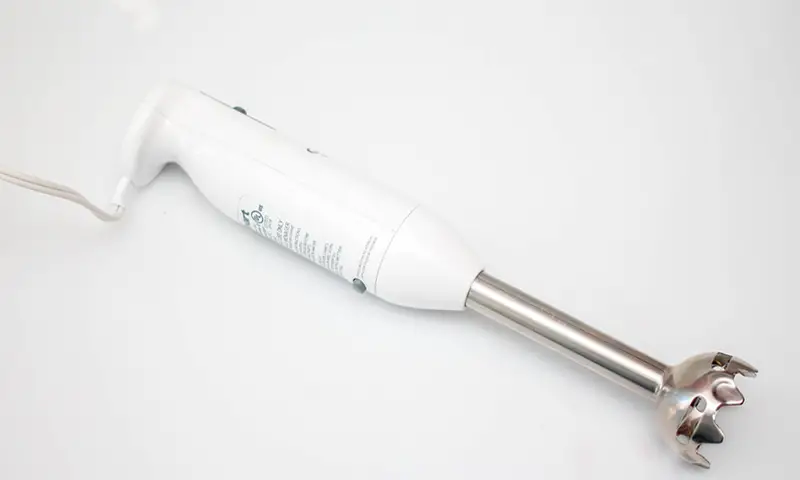
How to Grind Coffee Manually – 7 Fun Ways!
If you want to go old school and manually grind your coffee, you have a few options:
Use a Mortar and Pestle
For effective grinding using a mortar and pestle, you’ll first take a small quantity (around 10 grams) of coffee beans and place them at the bottom of the mortar. Now, use your non-dominant hand to cover the top of the mortar to prevent coffee beans from popping out.
Use your dominant hand to move the pestle against the mortar firmly, pushing the contents against the sides and/or of the bowl. At 10 second intervals, check your coarse grind. Repeat this process until you get the desired consistency.
With enough effort and time, you can use a more and pestle to get any coffee consistency from coarse grinds to super finely ground.
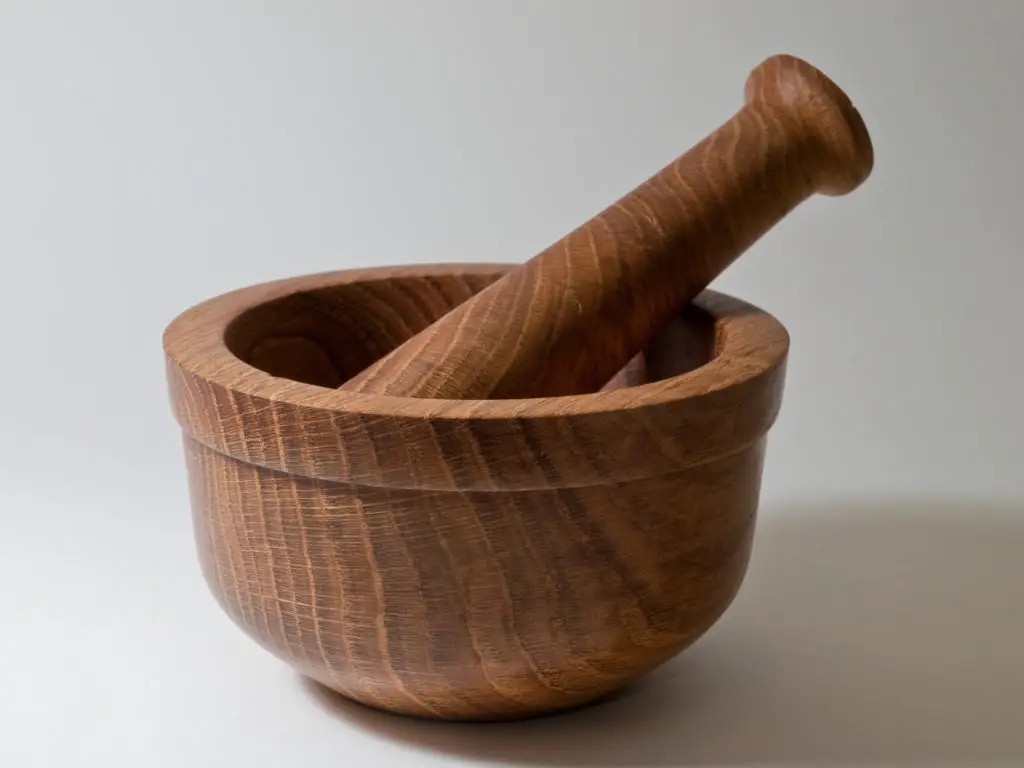
Crack your Coffee Beans With a Knife
Another effective way to grind beans without a grinder is by cracking them with the help of a knife. To begin, place your coffee beans on a large cutting board. Using the flat side of a large knife blade, push down on top of the bag. Apply enough pressure to make the coffee beans crack.
Continue the process again and again to get fine grinds. That said, this method will likely only yield a moderate grind. As well, we should mention the added risk of using a sharp knife. Please use caution when trying this method.
Granulate with the Help of a Rolling Pin
Safer than using a knife, you can also use a rolling pin to grind beans without a grinder to achieve a mid-level grind or even super finely ground too.
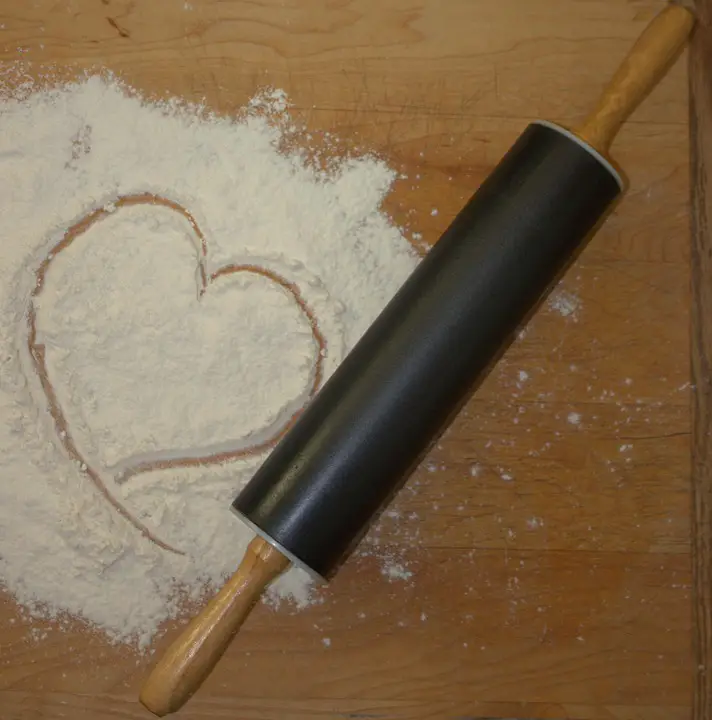
Firstly, measure out your coffee beans and then transfer them into a large plastic freezer bag. Now, seal the bag while also removing all of the air. Place the bag on a level surface such as a cutting board or a countertop. Spread the beans out into a single layer. Next, pound the coffee beans with the rolling pin to crack them.
Once cracked, roll the rolling pin back and forth to get a finer grind.
Take a Hammer and Start Banging
Another effective way to grind your beans without a grinder is with the help of a hammer. Using a similar method as above, put your beans inside a freezer bag. Lay the package on top of a towel on a level surface, spreading the coffee grinds into a flat layer.
Crack the coffee beans by the beans with the hammer and continue this until you have completely crushed all the coffee beans into consistent grinds. You can also use a mallet or a meat tenderizer in place of a hammer. Especially useful if you’re after a more grainy or a medium density texture. Put the coffee grinds in your favorite coffee makers and you are good to go.
Use a Hand Mincer
Your hand mincer acts as a manual grinder which can be used to granulate anything, including coffee beans.
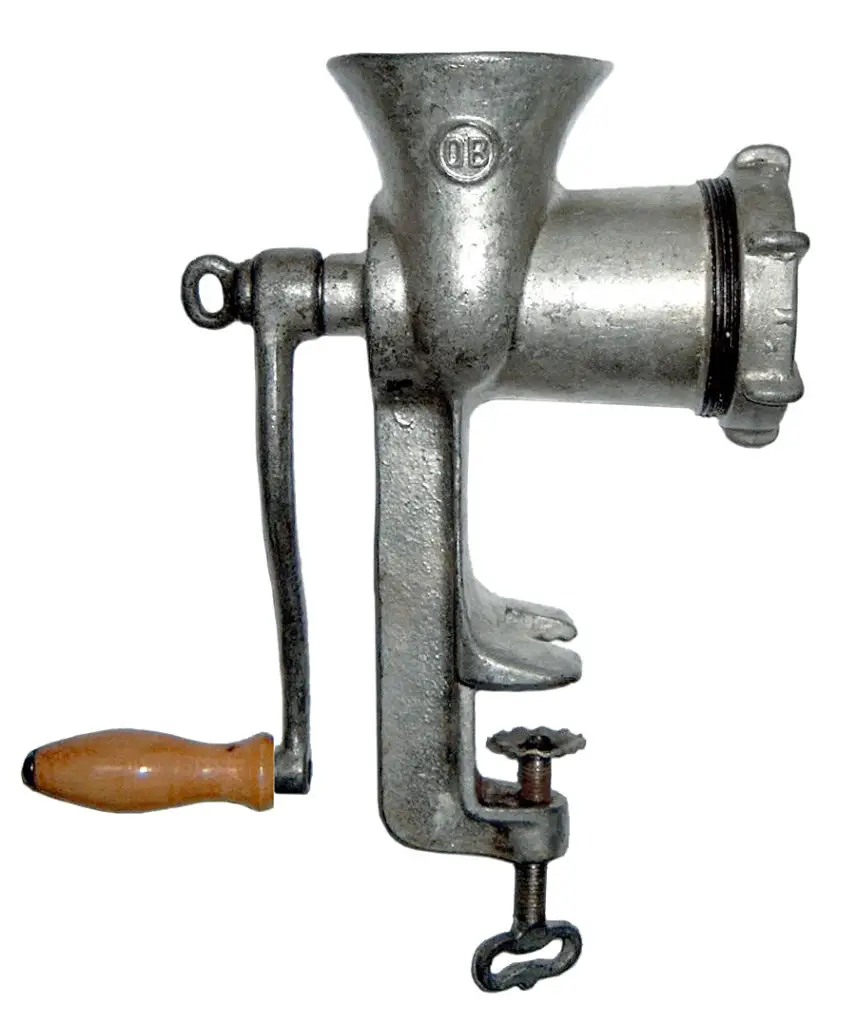
Measure out your beans and then pour them slowly into your hand mincer. Use the handle to rotate the wrench arm in a clockwise direction to crack the beans. If you want a fine grinds, collect and pour back into your hand mincer for another run.
So, now that you’ve finished reading out guide, grinding coffee grinds sounds easy, right? We’re confident that once you get the hang of it, you’ll find it’s actually quick and easy to do. Definitely worth the extra time and manual labor!
